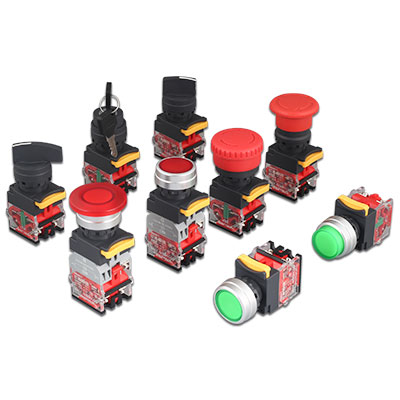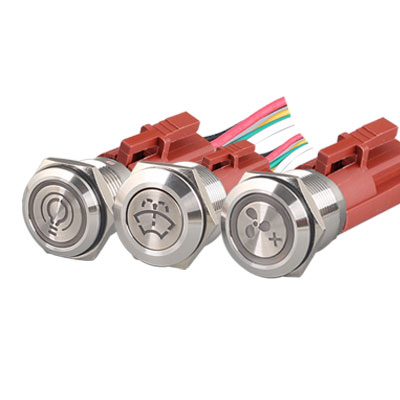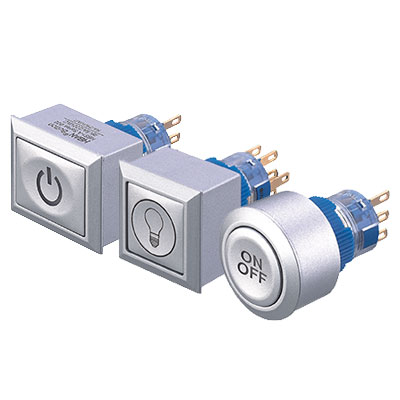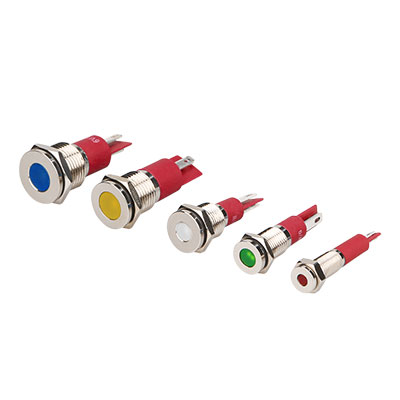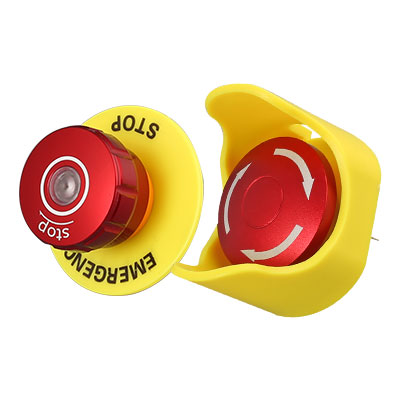Momentary vs maintained push button | HBAN Push button
What is a momentary push button?
A momentary push button (also known as a reset button switch) only changes the circuit state when pressed. Once the finger is released, the internal spring of the button restores it to its original state (usually the off position).
1.Working Principle of a Momentary Push Button
The core function of a momentary button is spring reset switching. When the user presses the button, the contacts close (or open), and the circuit is connected (or disconnected). When the button is released, the spring immediately restores it to its original position, causing the contacts to open (or close), thereby disconnecting (or connecting) the circuit.

2.Common Applications of Momentary Push Buttons
Momentary buttons are suitable for short-term triggering scenarios, such as:
- Doorbells: Rings when pressed, stops when released.
- Elevator buttons: Sends a signal to the control system when pressed, then resets automatically.
- Electronic device restart: Used for forced restarts or startup.
- Industrial start button: The equipment starts operating when pressed.
3.Advantages and Disadvantages of Momentary Push Buttons
Momentary Push Buttons Advantages:
- Quickly restores the system to its initial state, avoiding the complexity of power cycling.
- Flexible for various applications (testing, debugging, emergency recovery).
- Suitable for short-term signal input and simple operation.
Momentary Push Buttons Disadvantages:
- Mechanical buttons may fail over time due to contact oxidation.
- Accidental pressing may interrupt critical processes.
- Not suitable for devices that require continuous power.
What is a maintained push button?
A maintained push button (also known as a locking button) retains its state after being pressed once. The circuit remains connected until it is pressed again to disconnect.
1.Working Principle of a Maintained Push Button
A maintained push button uses an internal mechanical locking mechanism to keep the state unchanged. When the button is pressed, the internal spring compresses, activating the locking mechanism (such as cams, friction plates, or locking levers), causing the contacts to close and remain locked. When pressed again, the spring releases the locking mechanism, and the contacts open.

2.Common Applications of Maintained Push Buttons
Maintained buttons are suitable for continuous power applications, such as:
- Lighting switches: Press once to turn on the light, press again to turn it off.
- Industrial equipment power control: Maintains device operation without requiring constant manual pressing.
- Office electronics: Power switches for 3D printers, scanners, and other office devices.
- Transportation & medical devices: Car door locks, medical monitor power controls.
3.Advantages and Disadvantages of Maintained Push Buttons
Maintained Push Buttons Advantages:
- Suitable for long-term stability, reducing operational errors.
- Requires only a single press for operation, enhancing user convenience.
- Extends equipment lifespan by avoiding frequent on/off switching.
Maintained Push Buttons Disadvantages:
- More complex mechanical structure, leading to higher costs.
- Electromagnetic interference may affect electronic locking switches.
- The locking mechanism may jam, causing malfunctions.
Momentary vs Maintained Push Button
| Comparison Item | Momentary Push Button | Maintained Push Button |
|---|---|---|
| How It Works | Press to connect, release to disconnect | Press once to connect, press again to disconnect |
| Reset Mechanism | Internal spring automatic return | Mechanical lock, requires pressing again to release |
| Application Scenario | Short-term control, such as doorbells, game controllers, elevator buttons | Continuous control, such as power switches, lighting |
| Energy Consumption | Low, power is on only when pressed | Potentially high, as it requires continuous power |
| Security | Suitable for emergency stop buttons | Ideal for equipment power control |
How to choose the right pushbutton?
When choosing a push button switch, there are several key factors to consider:
1.Application Requirements
- If a push button switch that is triggered briefly is required, such as a start signal or temporary control, select a momentary push button switch;
- If a push button switch that needs to be maintained for a long time is required, such as equipment power or lighting control, choose a maintained push button switch
2.Security requirements
- For high-security places, if you need to find it quickly in an emergency, it is more appropriate to choose a maintained button emergency stop switch with a red head;
- For places with fewer people, only a single control circuit is needed, and a momentary button is select to start the control signal; For places with fewer people, only a single control circuit is needed, and a momentary button is select to start the control signal;
3.User Experience
- If the user needs to quickly trigger a function, such as a doorbell or elevator button, it is more appropriate to choose a momentary push button switch;
- If the user needs to hold the button for a long time to keep the device running, it is more convenient to choose a maintained button
Which push button switch is better for you?
Momentary buttons and maintained buttons each have their own advantages and disadvantages. The choice should be made based on the specific application scenario. If your device needs to be triggered briefly, please choose a momentary button. If your device needs continuous control, please choose a maintained button. If you are choosing high-quality industrial buttons, electronic switches or customized button solutions, we provide a variety of models to meet different application requirements. Welcome to communicate with us for more product information!
 Guide to waterproof push button switches that enhance equipment durability | HBAN Push button
Guide to waterproof push button switches that enhance equipment durability | HBAN Push button
 Discover The Surprising Benefits Of Using A Mushroom Push Button | HBAN Push button
Discover The Surprising Benefits Of Using A Mushroom Push Button | HBAN Push button
 What is a 12mm push button switch? | HBAN Push button
What is a 12mm push button switch? | HBAN Push button
 Spring Festival holiday notice | HBAN Push button
Spring Festival holiday notice | HBAN Push button








